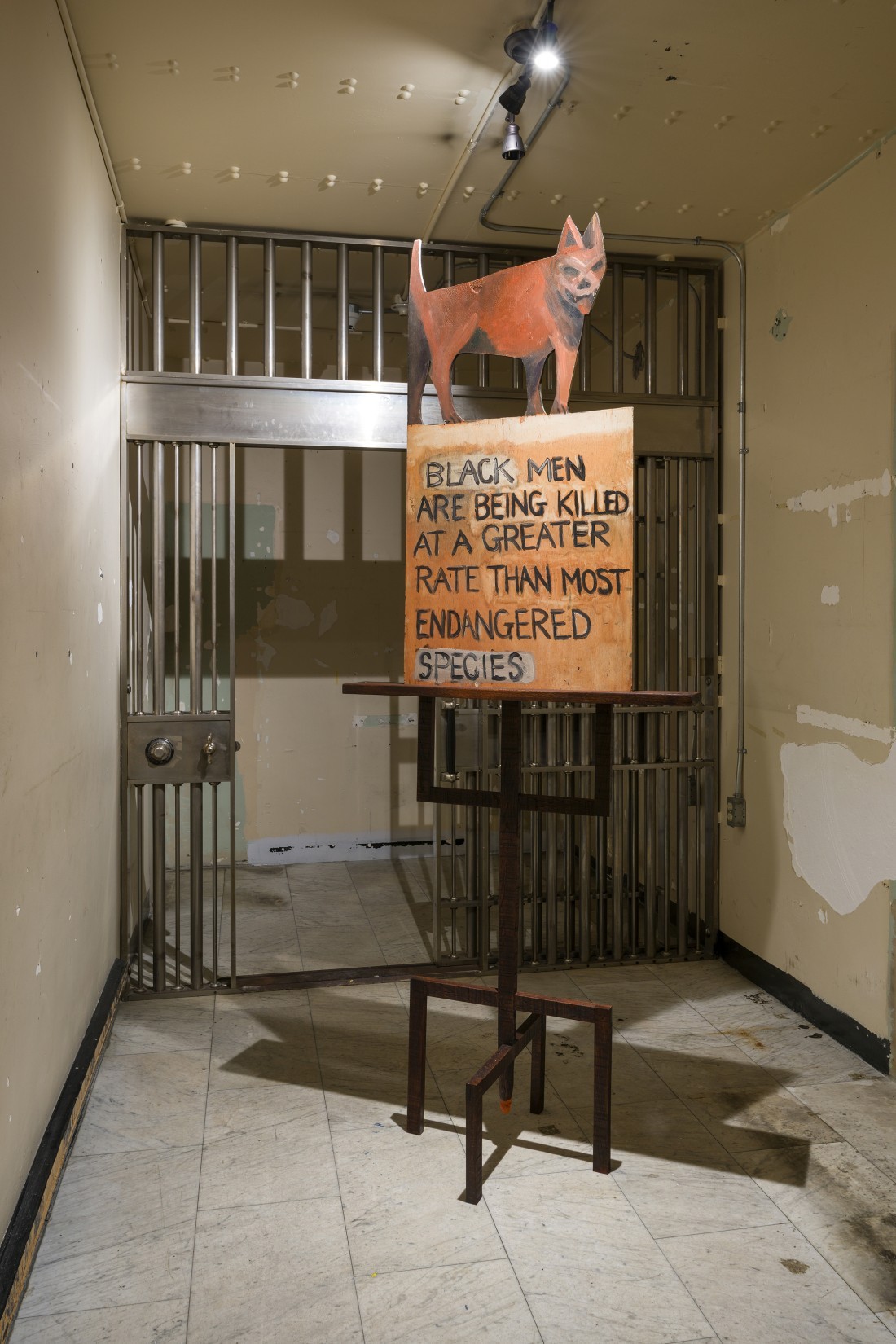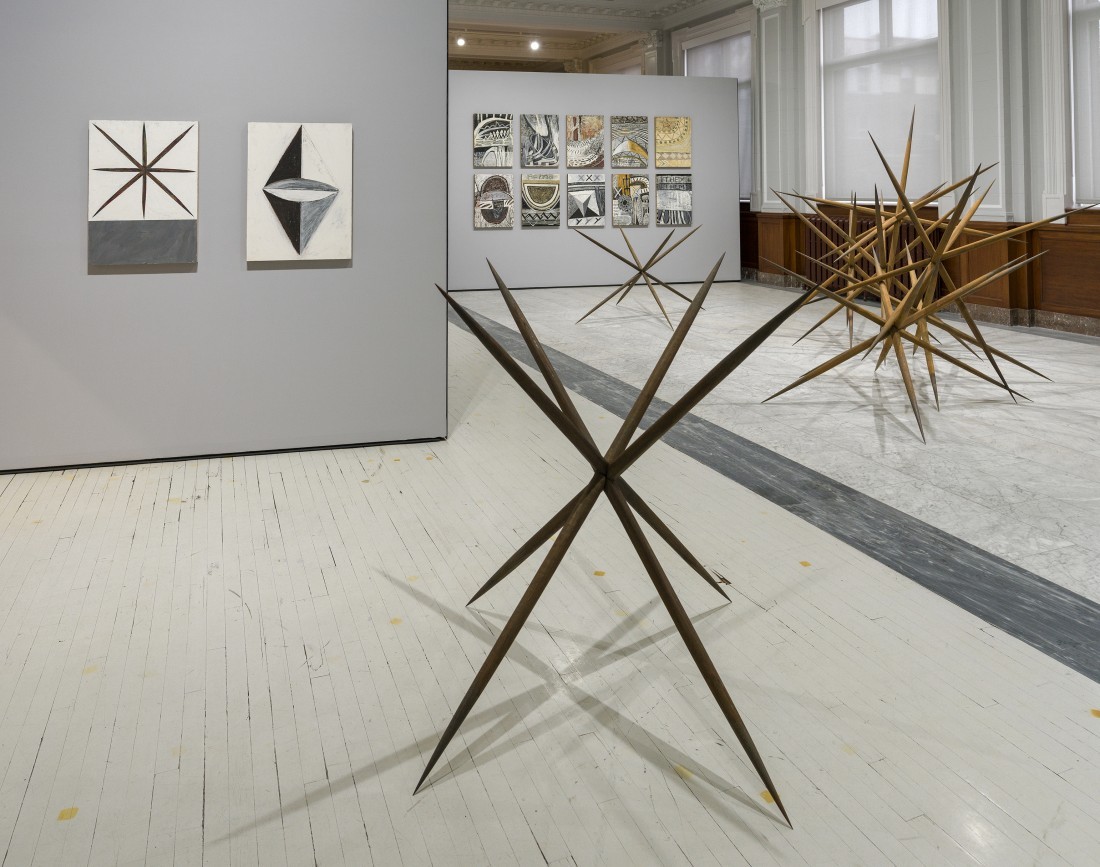Robert Holland Murray
This past winter, the Guido Molinari Foundation in Montreal held a partial retrospective survey of the work of the deceased African-American artist and professor R Holland Murray. Murray had settled in Montreal in the 1970s and lived mostly there until his death. Titled “R. Holland Murray: unpacking/ selected works,” and comprising a wide sweep of the artist’s production in three and two dimensions, the show was curated by Murray’s colleague and long-time friend, artist David Elliott, who organized and installed the exhibition with equal parts professional thoroughness and loving care for the artist’s work and legacy. R stood for Robert in Murray’s name and Holland was his mother’s maiden name. Variously known as Robert or sometimes as Murray, and often as Bob (which he said he disliked but seemed to enjoy best), Murray was born in 1939 in Detroit and passed away in Montreal in 2017, a retired (and much beloved) professor of painting and drawing at Concordia University, and a respected but somewhat forgotten artist, whose last show was also curated by Elliott at Concordia’s FOFA Gallery, in the long and beautiful vitrine section there, in 2007. He had shown on a regular basis from the 1970s to the early 2000s, both in Quebec and Michigan, including seminal shows such as “American Black Art: Black Belt to Hill Country, the Known and the New” at the Art Center of Battle Creek in 1977. But by the mid-2000s his exhibition career had largely slowed down.

R Holland Murray, Depot Dog, 1990, oil on wood, 122 x 61 centimetres. Photo: Guy L’Heureux. All images courtesy Fondation Guido Molinari.
I’m going to break with my usual review protocol and say something personal about Robert, whom I knew, because along with his profound and excellent artwork, he was an art professor of real ability who deserves to have something written on that score as well. I was never officially registered for any of Robert’s classes at Concordia, where I did my undergraduate degree, but he let me attend them regularly anyway. He treated undergraduate students— provided they showed seriousness and some promise—as for-real artists. Robert talked frequently about the “four percenters”—those artists who continued on, making art seriously after art school. He asked almost everyone if they were a four percenter—some people over and over. In a thousand small ways, he communicated the specialness of being an artist. It meant belonging to a perhaps overlooked but sacred group, something crucial to humanity, whether they liked it or not. He talked a lot about what it was to belong to the category “artist,” and he imparted deep and convincing force to the feeling that, regardless of professional motivations or successes, being a real artist was the most awesome thing you could aspire to. Both easy and impossible. Something you just were and unfulfillable but of great importance, even if no one noticed. He made it clear that you don’t become a real artist by becoming a professional, a success; it was something else. Without specifics, he made himself crystal clear. He didn’t judge, he was open-minded and fair, and he had a knowing sense of humour. We talked about tons of different subjects, but even when we were just chatting about nothing in particular, Bob gave me the feeling that it was all filtered through being a real artist, completely unpretentiously and in a way that was spiritually generous. He had an aura of legitimate authority, which he almost never used to tell anyone they were wrong. When he did express disapproval or real disagreement, it was intense. He was a great teacher.

R Holland Murray, Prophets, 1985, painted wood and mixed media, 183 x 241 x 48 centimetres. Photo: Guy L’Heureux.
In light of the fact that a proper show of his work was overdue, the Molinari Foundation is a fitting venue, considering that Guido Molinari was himself a colleague of Robert’s at Concordia and a great teacher there. Elliott’s curation was bold in its visual impact but subtle in terms of its differentiations within Murray’s practice. The more recent work, and in particular, the spectacular hardwood sculptures from the “Parallax” and “Nexus” series, was on the ground floor, along with one of Murray’s infrequent but highly characteristic paintings. The second floor was devoted to older work from the 1970s and ’80s. Quietly, Robert was a follower of the Baha’i faith and spoke occasionally about the Creator. The second floor of the building featured a major painted wood sculpture called Prophets, which names a number of prophets from the history of monotheistic and other faith traditions, ending with Bahá’u’lláh, the prophet of Baha’i. The piece, which is movingly evocative and iconic, is a clear example of the self-aware and sophisticated post-minimalism of its period, and can easily be related to works by Joseph Beuys, for example, or Eva Hesse—and is also a devotional object of powerful emotional seriousness, spiritual values and honest faith. Murray could pack a lot of different sets of meaning into any work he made, bringing them all into the wake of his artistry. He spoke a lot about “finishing” an artwork, by which he meant whatever it took to give every artwork as much individuality and energy as possible, to make it communicate something unique. His own finishing was really good, technically and conceptually, as well as in that ineffable sense he alluded to. The works in this show gave the impression that he always knew how much to put into any project. Whether he was spending countless hours carving with specialized Japanese tools or approaching things through “deskilled” or “found” artistic pathways, he didn’t let a piece go until it satisfied some stringent inner sense of what it should and could be.

Foreground: R Holland Murray, Nexus, 1999–2001, wood, variable dimensions. Photo: Guy L’Heureux.
The “Nexus” series that occupied most of the space in the main gallery is spectacular to look at—even to be physically in its presence. Virtuosically made to a literally frightening degree, these objects are nonetheless intimate in their impact. Recalling a wide range of references from the machine-made to natural phenomena, their spiny limbs are potentially of actual danger to the viewer, sharpened to weaponlike points and metres long. The emotional field they generate reads as complex, anthropomorphic and possessing its own whole existence. These spiky wooden object beings impart a tenderness that is deeply moving once you look at them for a while. Every passage of their surfaces is rich with invested meaning. Robert wanted to make art that read as the art of a Black Man, and he held powerful political views. He also beautifully seemed to believe that any person could understand and identify with any another, could share experiences, and he wanted his work to reflect that. It does. This is an artist who, it is hoped, now will become much more widely known. We’ll all benefit if so. ❚
“R. Holland Murray: unpacking/ selected works” was exhibited at the Guido Molinari Foundation, Montreal, from February 3, 2022, to April 3, 2022.
Benjamin Klein is a Brooklyn- and Montreal-based artist and writer, and co-director of McBride Contemporain in Montreal.

